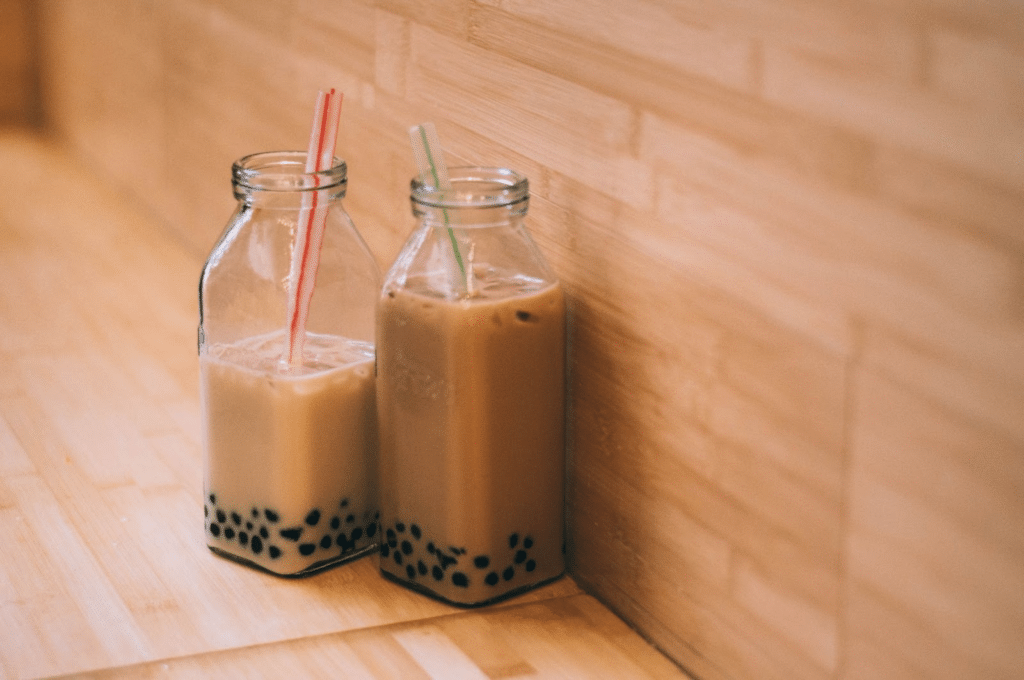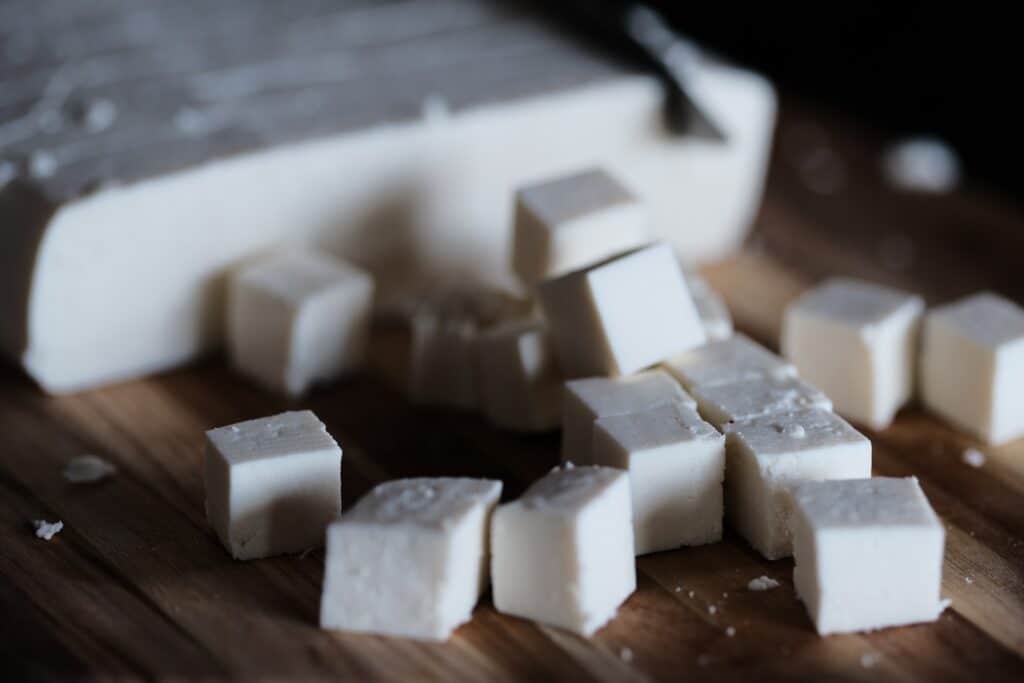Discovering the Truth of Bubble Tea’s Nutritional Content
Are you curious about the nutritional value of bubble tea? Have you ever wondered if this sweet and chewy drink could be part of a healthy lifestyle?

In recent years, bubble tea has become increasingly popular, with many people enjoying it as a refreshing snack. But how healthy is it? This article will dive deep into the nutritional value of bubble tea to help you make an informed decision when choosing what to drink.
The Ingredients Of Bubble Tea
Bubble tea is a popular drink in Taiwan and has gained worldwide popularity. While it is known for its unique taste and chewy tapioca pearls, many people are curious about the nutritional content of bubble tea. The ingredients of bubble tea can vary depending on the flavour, but most recipes include black or green tea, milk, sugar syrup, and fruit flavours.
Black or green tea is a common base for bubble tea and provides numerous health benefits. Both teas contain antioxidants that can help reduce inflammation in the body and may lower the risk of chronic diseases such as heart disease and cancer.
Milk is another ingredient commonly used in bubble tea that provides calcium for healthy bones and teeth. However, it’s important to note that some recipes may use non-dairy alternatives such as almond or soy milk, which may not provide the same nutrients as dairy-based milk.
The Sweetener
The sweetener is a crucial ingredient in bubble tea, and it can significantly impact the nutritional content of this popular drink. But with so many different sweeteners available, it can be challenging to decide which one to choose for your recipe.
When it comes to choosing a sweetener for your bubble tea, there are several options available.
The most commonly used sweeteners are sugar syrups like fructose or high-fructose corn syrup. These ingredients can add significant amounts of calories and sugar to your drink, which may not be ideal if you’re trying to watch your intake. However, some shops offer alternative sweeteners like honey or agave nectar with lower glycemic indexes than traditional sugars.
The Toppings
From boba pearls to fruit jelly, each topping offers a unique texture and flavour profile that can make or break your bubble tea experience.
When considering the nutritional content of bubble tea toppings, it’s important to remember that some are healthier than others. For instance, boba pearls are typically made from tapioca starch and contain high levels of carbohydrates but offer little nutritional value. On the other hand, fresh fruit toppings like strawberries and peaches add natural sweetness and essential vitamins while keeping calories low.
Another crucial factor in choosing the right topping for your bubble tea is understanding its ingredients. For example, adding condensed milk or chocolate sauce can dramatically increase the calorie count in your beverage. Be mindful of these ingredients and opt for healthier alternatives such as fresh fruit or chia seeds.
Flavouring
Flavouring is an essential aspect of any food or beverage and plays a crucial role in determining the overall taste and appeal.
Bubble tea shops often use artificial syrups or powders for their flavourings, but these can be high in sugar and other unwanted additives. Natural ingredients such as fresh fruits and herbs can be used to ensure that your bubble tea remains healthy while still packing a punch in terms of taste. This adds natural sweetness to your drink and provides additional health benefits from antioxidants and other nutrients present in the ingredients.
When choosing flavouring ingredients, selecting those with low calories and high nutritional values is essential.
Calories In A Bubble Tea
Basically, the calorie count varies based on the ingredients used to make the bubble tea.
The number of calories in bubble tea can vary widely depending on the type and quantity of ingredients used. For example, a traditional black or green bubble tea served with tapioca pearls contains around 300-400 calories. However, fruity versions of this drink can contain even more calories due to added sugars and artificial flavourings.
Most recipes call for milk or creamer, which adds significant fat and sugar. The tapioca pearls (also known as boba) that give bubble tea its signature chewy texture are also high in carbohydrates and calories. A single serving of bubble tea drinks can contain up to 500 calories – equivalent to a large meal!
If you’re concerned about calorie intake but still want to enjoy this delicious drink, there are some things you can do to lower the calorie count. Opting for dairy-free options or alternative sweeteners like honey or stevia can help reduce the overall calorie count without sacrificing taste.
Possible Bubble Tea Health Risks
Bubble tea has become a popular drink among people of all ages, but are you aware of the potential health risks associated with this beverage? Bubble tea uses black or green tea, milk, and sugar syrup. The “bubbles” in the drink come from tapioca pearls that are added to it. While bubble tea may taste delicious, consuming it regularly can lead to some serious health issues.

One major concern with bubble tea is its high sugar content. A single serving can contain 20-30 grams of sugar – equivalent to six or seven teaspoons! Excessive consumption of sugary drinks has been linked to an increased risk for obesity, type 2 diabetes, and heart disease.
Another risk associated with consuming bubble tea is the inclusion of artificial additives in some varieties. Some types of bubble tea include chemical additives such as food dye and artificial sweeteners known to cause serious health issues over time when consumed excessively. It is, therefore, advisable to opt for natural ingredients when making or purchasing these drinks whenever possible.
Conclusion
In conclusion, bubble tea can be enjoyed in moderation as part of a healthy diet. However, it is important to note that bubble tea’s sugar and calorie content is high and can contribute to unhealthy weight gain.
Therefore, it is important to consider your dietary needs when considering having bubble tea. Drinkers should also remember that the toppings used to customise bubble teas may add additional calories and sugar.
FAQs
How does bubble tea compare to traditional coffee, soda, and milk?
Bubble tea is a drink that has been gaining popularity in the last few years. It is a mix of milk, sugar, and tea. The drink can be served hot or cold. Bubble tea is becoming more popular with its many benefits compared to other traditional drinks. It has fewer calories than coffee, less sugar than soda, and is not as processed as milk.
What is the suggested consumption of bubble tea per person?
Bubble tea is a popular drink in many countries. It can be served with or without bubbles. The suggested consumption of bubble tea per person is 1-3 cups per week.
What flavour of bubble tea is the healthiest?
A recent study found that the healthiest flavour of bubble tea is the Matcha green tea flavour. This type of tea contains antioxidants and has lower sugar levels than other flavours like mango or taro. It can also help reduce inflammation and improve your immune system.






